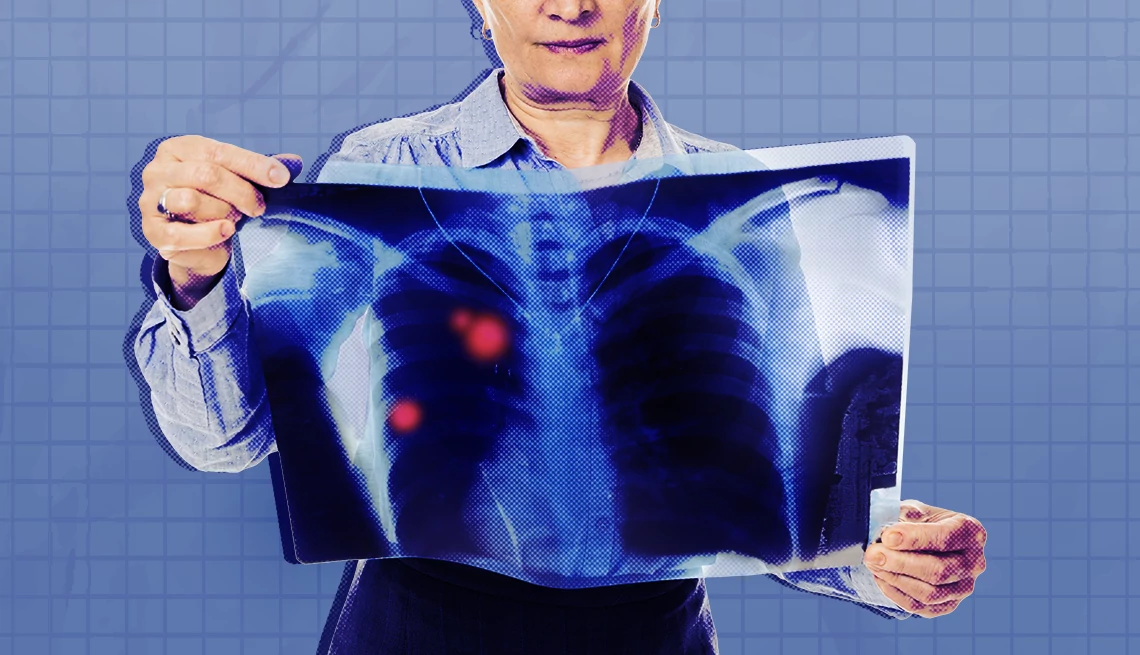AARP Hearing Center


Although the risk of dying from cancer continues to fall, new cancer cases are increasing, especially among women and younger adults.
Scientists say rising cancer cases in older women are particularly concerning. A new report from the American Cancer Society finds that incidence rates in women ages 50 to 65 have surpassed those of men in the same age group for the first time, according to the new research published Jan. 16 in the journal CA: A Cancer Journal for Clinicians.
Lifetime risk for cancer is about 40 percent for men and 30 percent for women, the new report states.
For many cancers, mortality and incidence trends are at odds
Even as cases continue to rise for eight different types of cancer — including prostate cancer in men, and breast, melanoma, uterine and liver in women — the report finds that deaths from cancer dropped by 34 percent from 1991 to 2022, due to progress in cancer treatment, early diagnoses and reduction in tobacco use.
Exceptions to the overall decline in cancer mortality include increasing death rates in both men and women for oral and pancreatic cancers, and in women for uterine and liver cancers.
Arif Kamal, M.D., chief patient officer for the American Cancer Society, says that although it’s heartening that cancer death rates have continued to decline over the past 25 years, it’s concerning that incidence is rising, particularly among younger people and women.
“Two decades ago, men would be more likely to be diagnosed with cancer than women. Now what we’re seeing is that gap closing pretty quickly, almost so it’s equal,” Kamal says. “For women between 50 and age 65, we’re seeing growth in cancer, particularly in lung cancer, where more women are being diagnosed than men under the age of 65.”
He adds that breast and uterine cases are also rising in women ages 50 to 65.
Why are more older women are getting cancer?
Although scientists don’t completely understand why cancer incidence is rising in older women, Kamal says unhealthy weight may be a factor, adding that being overweight drives the growth of 13 different cancers.
“We particularly need to pay attention to post-menopausal weight gain and post-menopausal obesity,” Kamal says. “The concern is, why is there such an uptick in cancers between 50 and 65, essentially at a time when women go through menopause.”
Kamal, an oncologist and former researcher at the Duke Cancer Institute, says women should pay attention to weight gain, particularly later in life. Because of hormonal changes in perimenopause and menopause, weight gain may actually drive the formation and growth of new cancers.




































































More From AARP
Despite Progress, Breast Cancer Disparities Persist for Many
Breast cancer mortality rates have fallen significantly since the late 1980s, thanks in large part to advances in early detection and treatment. But a new study from the American Cancer Society shows that not all populations in the U.S. have experienced this progress evenly. Learn more.
Scientists Make Progress on Cancer Vaccines
Researchers work on vaccines to prevent and treat cancerDo I Need a Prostate Cancer Screening Test?
A doctor’s advice on when men should get a PSA